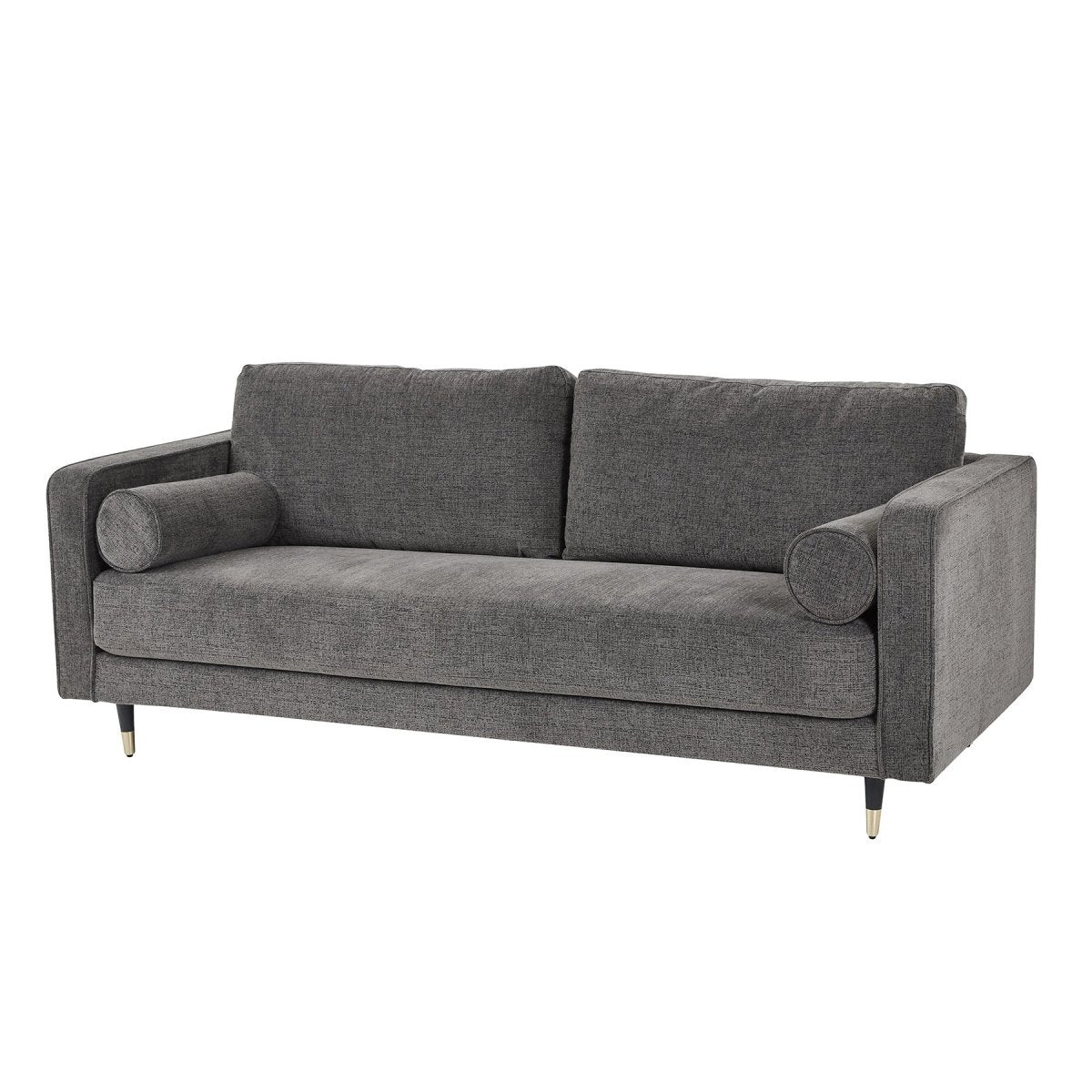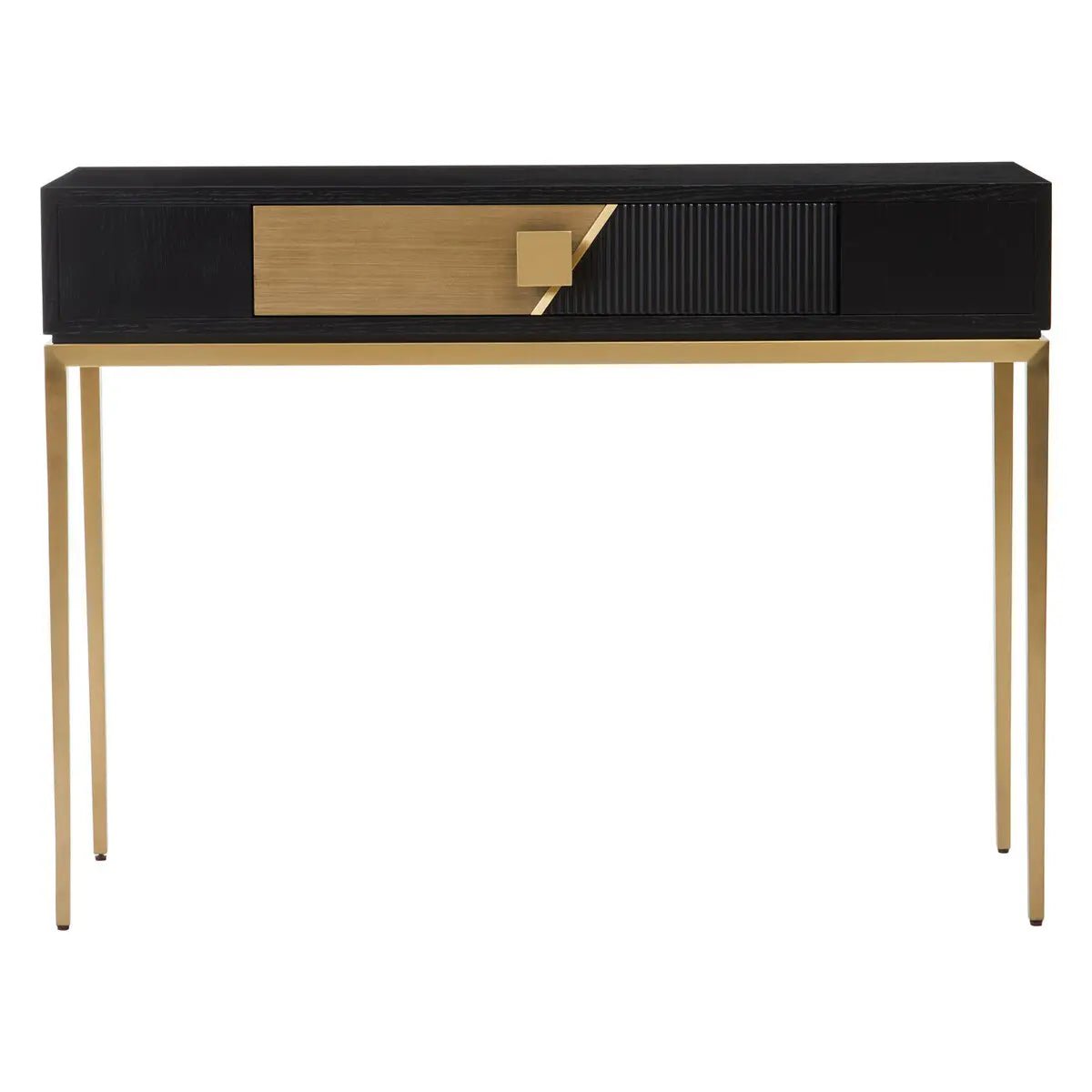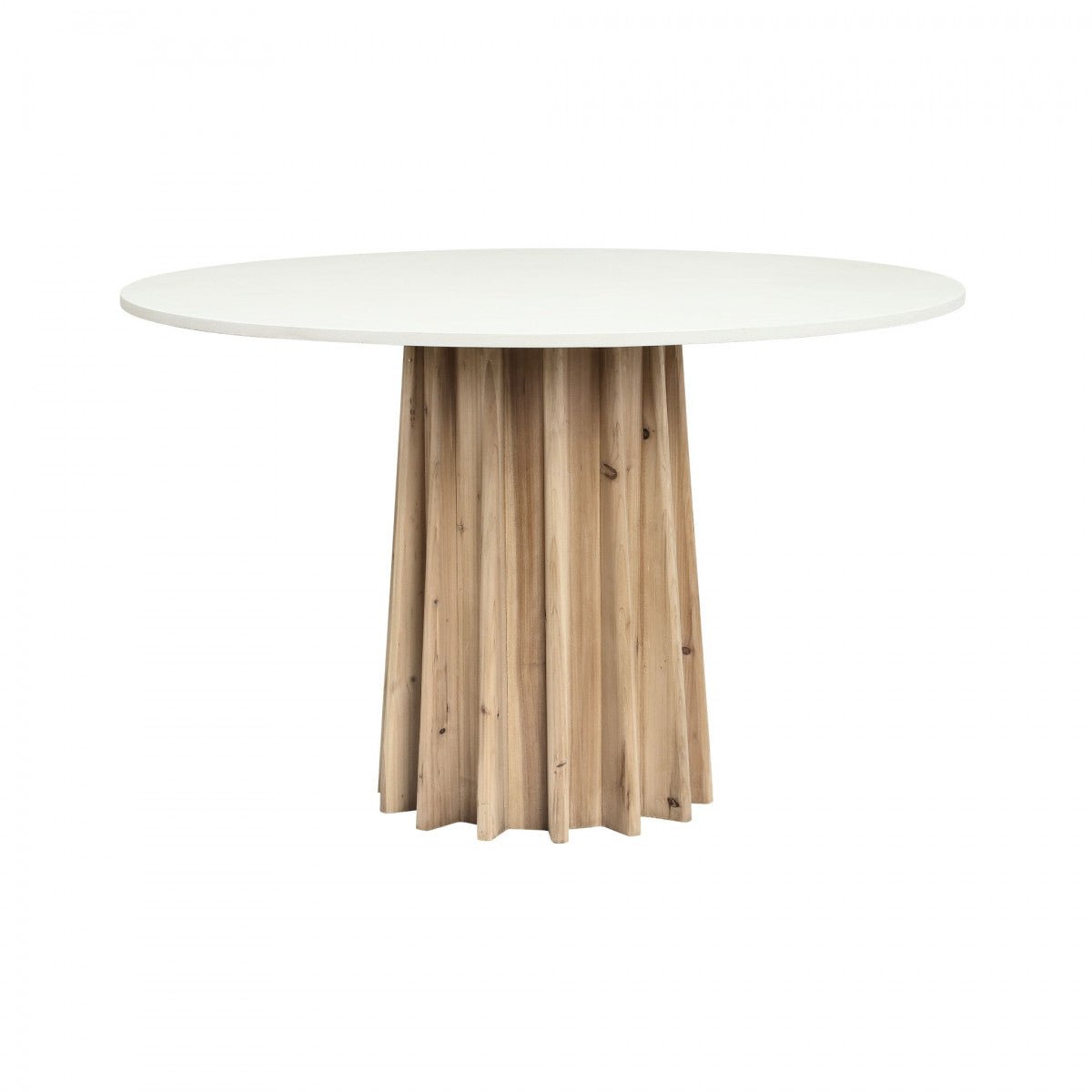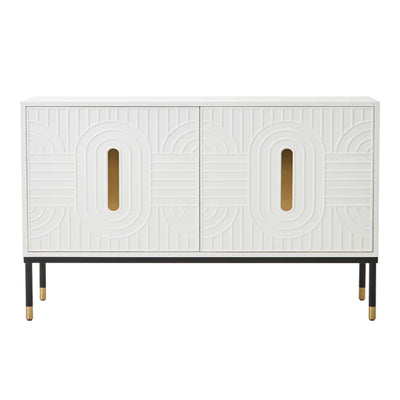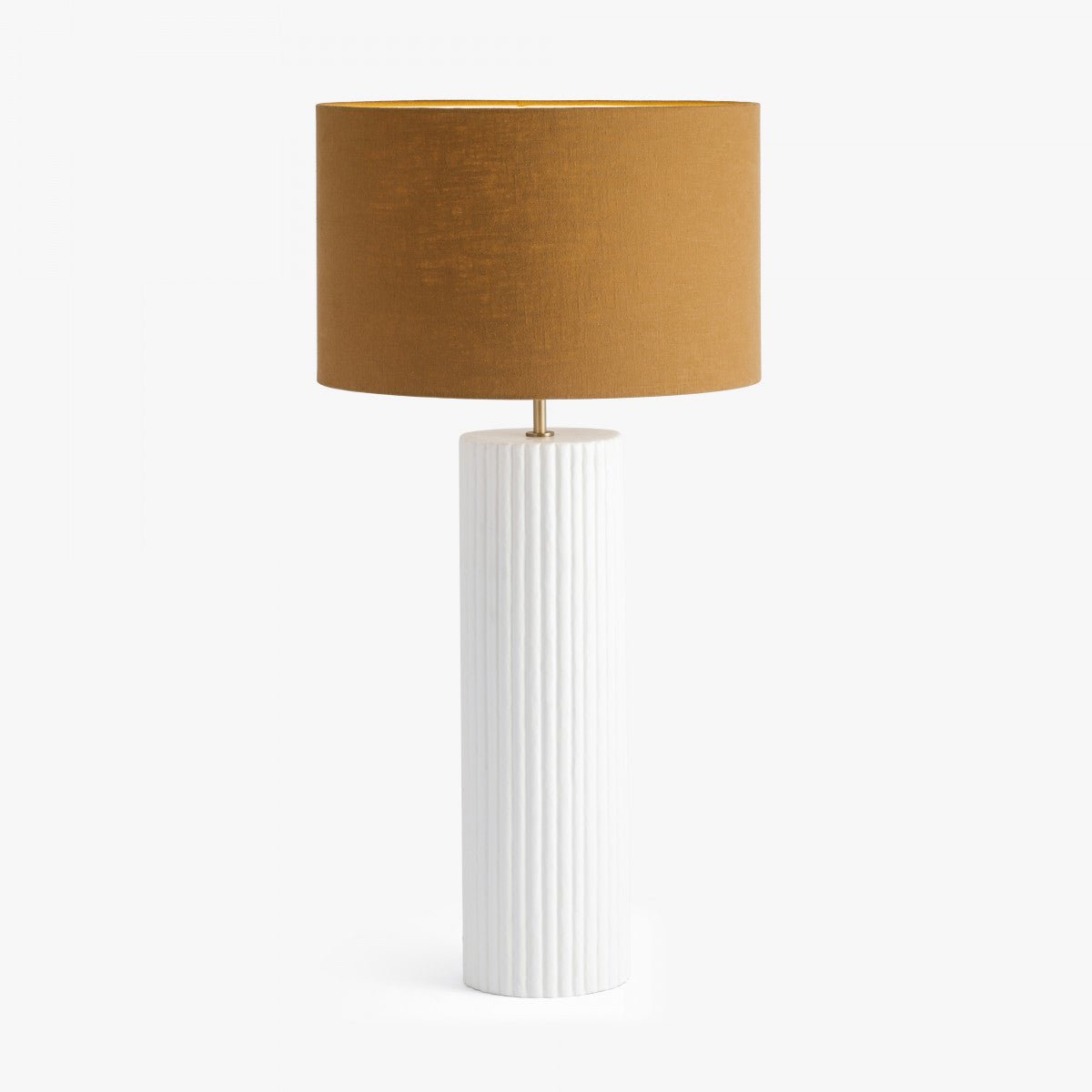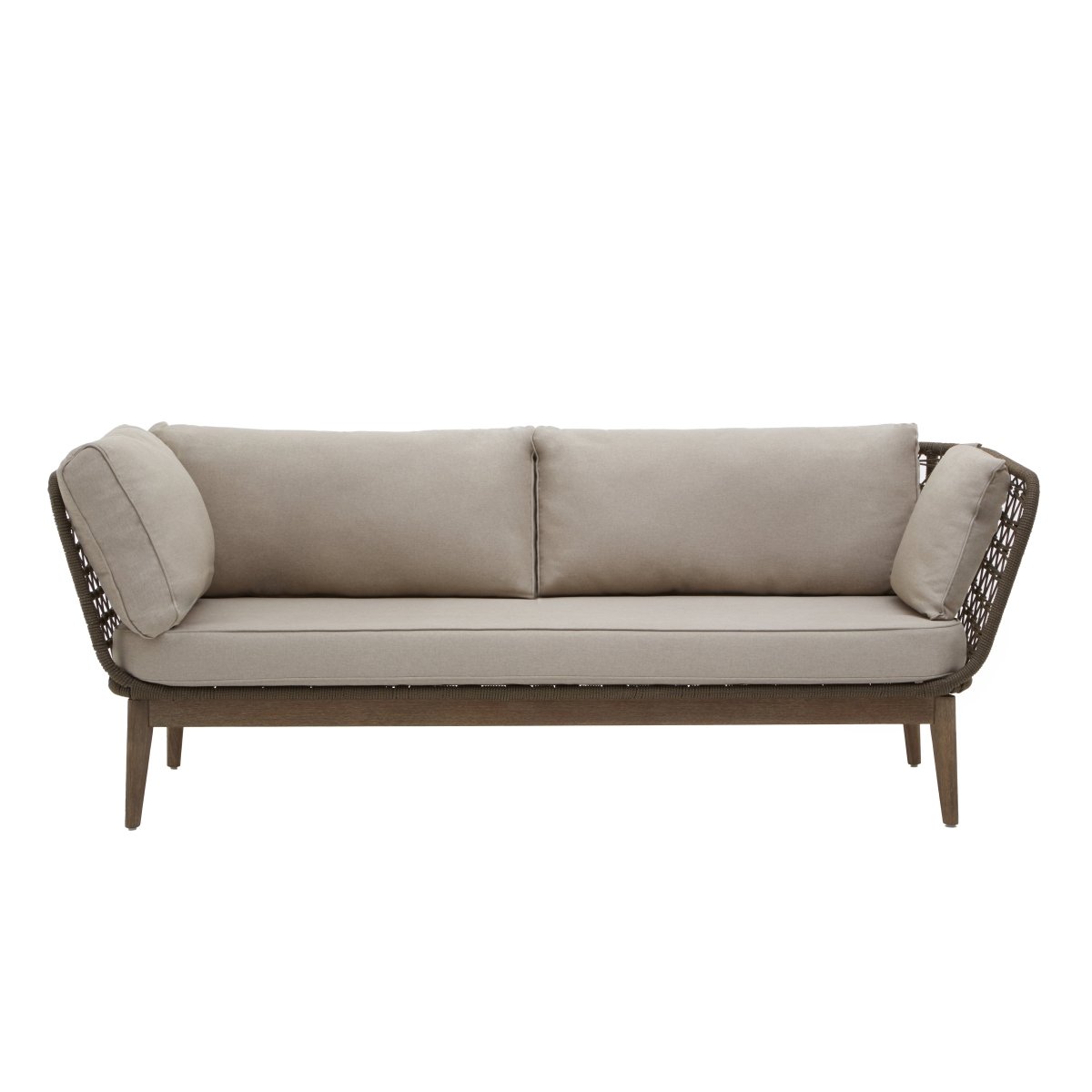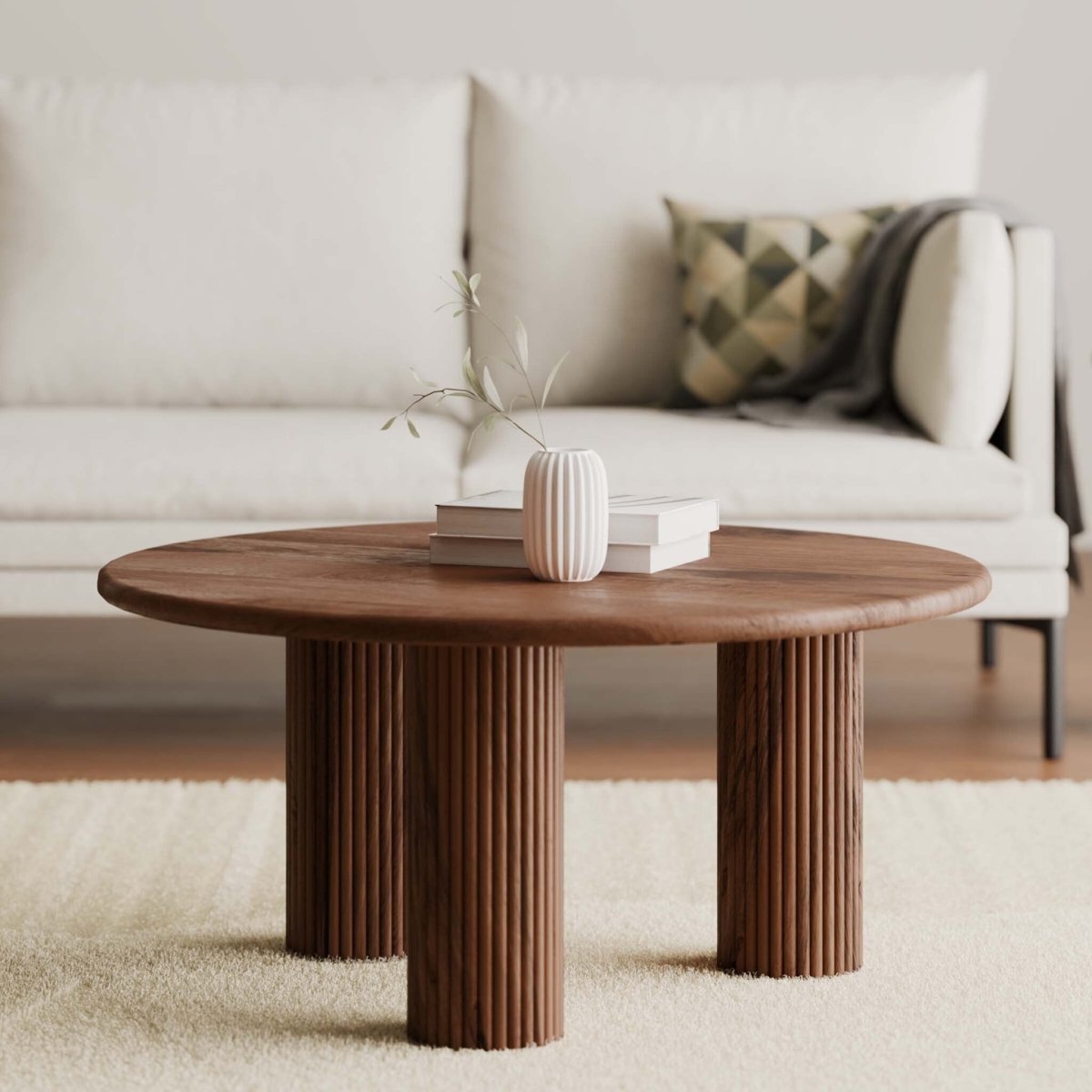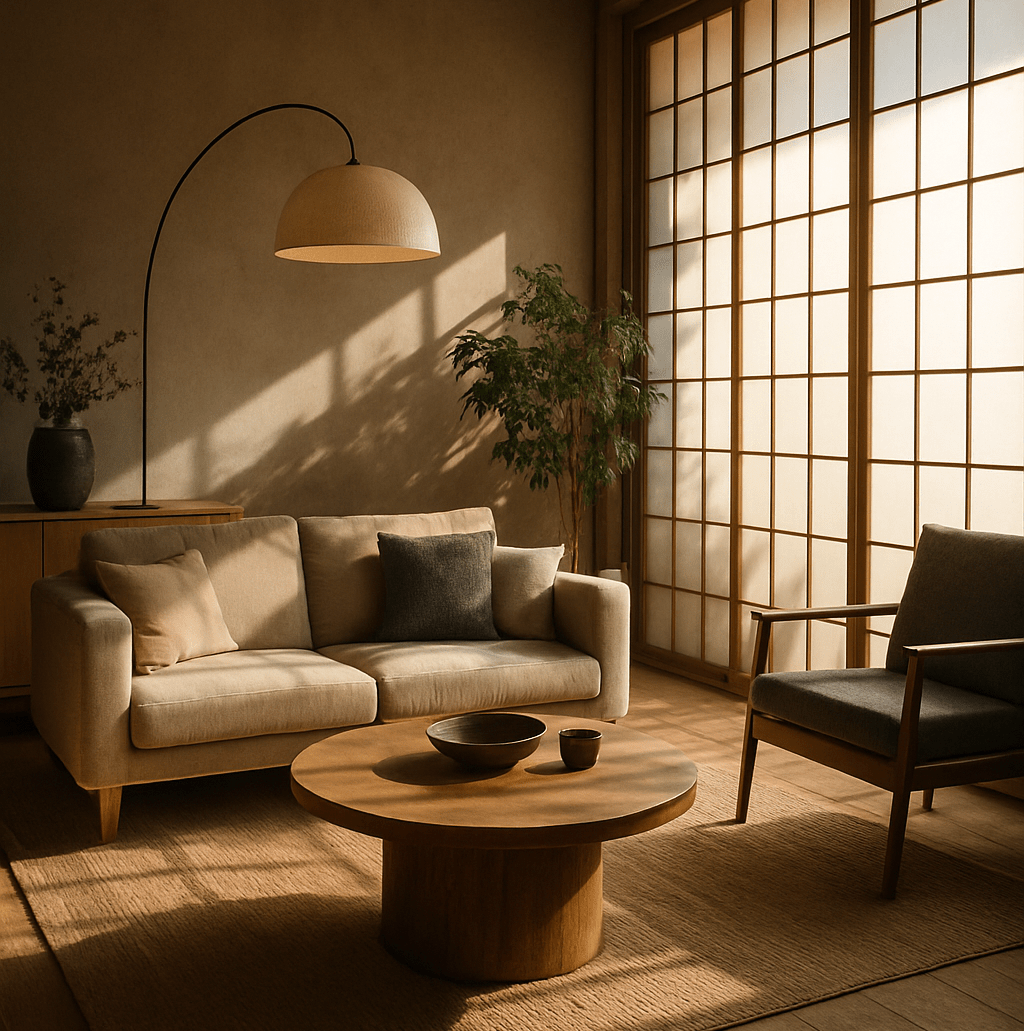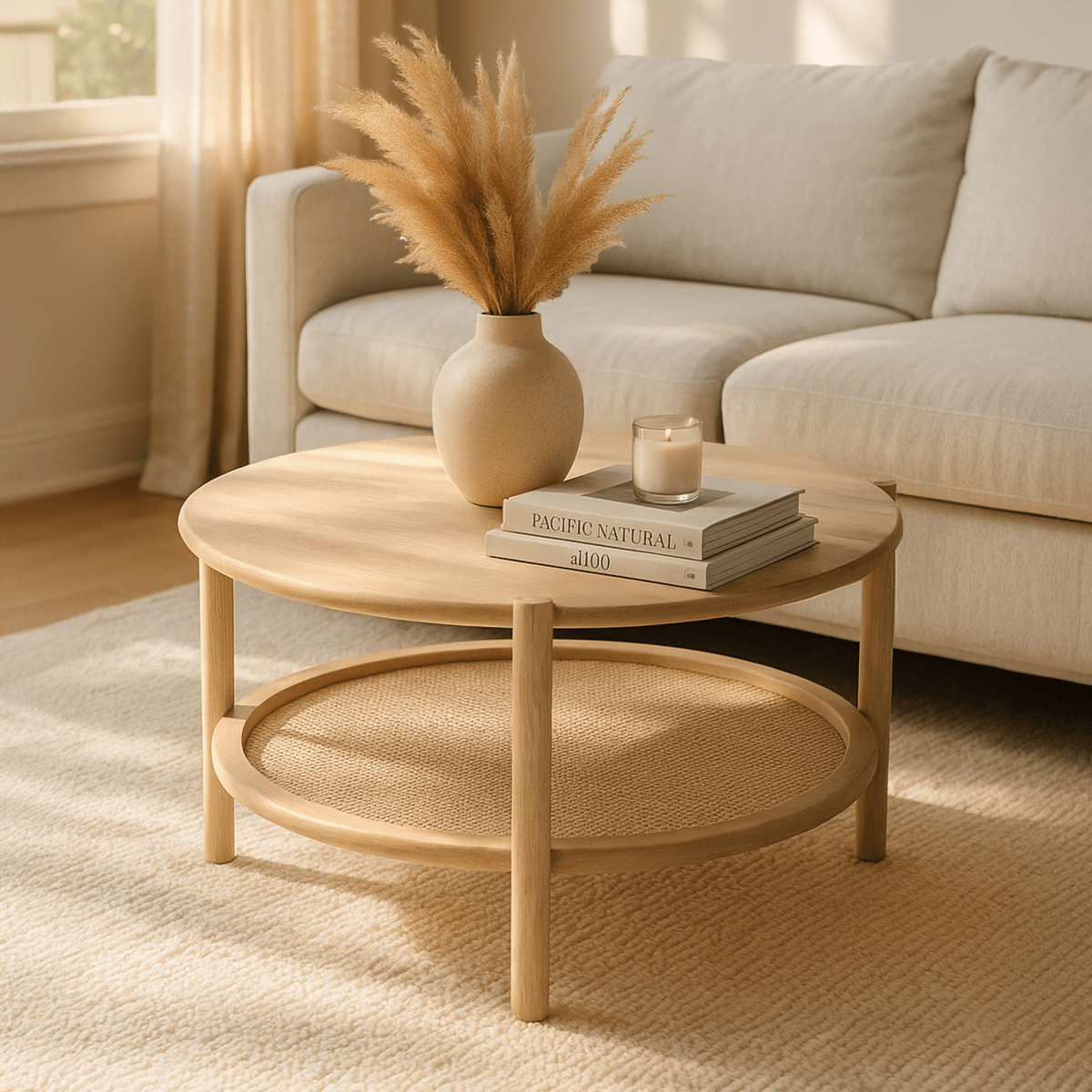Scandi garden: Pale decking or gravel, simple black or galvanised lanterns, and evergreens with white flowering accents. Choose clean-lined benches or accent chairs, add wool throws for hygge evenings, and keep pots in a restrained palette (black, grey, terracotta). The vibe is calm, airy and low-maintenance.
Japandi vs Scandi: Which Style is Right for You?
The two-minute cheat sheet
|
Scandi |
Japandi |
|
|
Mood |
Bright, airy, uplifting |
Calm, grounded, restorative |
|
Philosophy |
Hygge comfort and practicality |
Wabi-sabi simplicity and craftsmanship |
|
Palette |
Cool whites, light greys, soft pastels |
Warm whites, greige, earthy taupes, charcoal |
|
Material |
Light oak, ash, wool, cotton |
Natural timber, rattan, linen, stone, clay, matte black |
|
Shapes |
Slim, functional, lifted off the floor |
Low-profile, solid, tactile, handcrafted feel |
|
Styling |
Cosy layers, soft textures |
Less but better; negative space matters |
|
Best for |
Small spaces that need light |
Spaces that need warmth and serenity |
So, japandi vs scandi, which design trend is better for transforming your home?
What is Scandinavian (Scandi) style?
Scandi style comes from the Nordic countries and focuses on function, light and liveability. Think pale timber floors, clean lines, and unfussy forms that make everyday life easier. The palette leans cool: crisp whites, soft greys and a few gentle colour pops. Hygge is the heart of it, cosy throws, wool rugs and warm lighting that make even January evenings feel snug. It thrives in compact homes and flats where natural light and simple storage are key.

What is Japandi style?
Japandi style blends Japanese wabi-sabi and Scandinavian minimalism into a calm, nature-led look. It favours balance: warm, muted colours; honest materials like linen, stone and clay; and furniture that sits lower to the ground to create a restful, grounded feeling. Imperfection is welcomed – hand-thrown ceramics, textured plaster, timber with visible grain. The result is a space that asks you to slow down, simplify and breathe.

Key differences you’ll notice at home
-
Colour & contrast. Scandi reads brighter and cooler. Japandi goes warmer and moodier, often pairing warm whites and greige with charcoal accents for depth.
-
Materials & texture. Scandi uses light oak and ash with smooth finishes. Japandi layers tactile materials – rattan, raw timber, linen, stone, ceramics, and matte black metal.
-
Form & proportion. Scandi pieces feel light and leggy. Japandi prefers low-profile silhouettes, chunkier legs and grounded proportions.
-
Styling approach. Scandi layers cosy textiles and friendly accessories. Japandi edits more ruthlessly, giving objects space to breathe.
-
Lighting. Scandi uses abundant ambient light with simple pendants. Japandi favours warm pools of light and sculptural shades (hello, Japandi pendant light and Japandi floor lamp).
-
Maintenance. Scandi’s pale surfaces show scuffs less when everything is light. Japandi’s darker accents and natural textures can be more forgiving of everyday wear.

Which one fits your life?
-
Choose Scandi if you want: an uplifting, bright look; kid-friendly practicality; a quick refresh using simple storage and textiles.
-
Choose Japandi if you want: a calmer, spa-like mood; craftsmanship and tactility; fewer, better pieces; a home that encourages slower living.
Space and budget check. Scandi can be pulled together quickly with staple pieces and neutral textiles. Japandi often benefits from investing in texture — solid wood, linen, stone and artisan details — so curate gradually.
Room-by-room guide (with SEO-friendly ideas)
Living room
-
Scandi: Pale timber legs, slim Scandi sofa, light Scandi rug, layered wool throws and a simple gallery wall.
-
Japandi: A low Japandi sofa with linen upholstery, a solid wood coffee table, clay vases and a flatweave Japandi rug. Keep shelves airy and curated.
Lighting: Try a paper-shade Japandi pendant light for softness or a minimal metal floor lamp for contrast.
Bedroom
-
Scandi: White walls, light oak side tables, cotton bedding and a wool runner.
-
Japandi bedroom: Centre a low Japandi bed, add linen bedding in warm whites and greige, a timber Japandi wardrobe, and a ribbed ceramic table lamp. A round Japandi mirror softens the geometry.
Kitchen & dining
-
Scandi: Shaker fronts, pale timber, matte hardware, open shelving with everyday ceramics.
-
Japandi kitchen: Warm, natural fronts, stone or composite worktops, slim black pulls, fluted glass. Consider warm Japandi tiles (greige, putty, clay tones) and a sculptural paper or timber pendant.
Bathroom
-
Japandi bathroom: Calm neutrals, microcement or stone-look surfaces, a timber Japandi vanity unit, round Japandi mirror and simple black taps. Keep open surfaces and display a few handmade items.
-
Scandi bathroom: Crisp whites and soft greys with pale timber accents. Think simple subway or square tiles, a light-oak shelf or vanity, a round mirror, and chrome or brushed-steel taps. Layer fluffy cotton towels, a textured bath mat and warm ambient lighting. Keep surfaces clear—one candle, one plant, done.
Entryway & hallway
-
Japandi entryway ideas: A slim timber bench, woven baskets, a peg rail and a single piece of art. Edit keys, post and shoes into closed storage for visual quiet.
-
Scandi entryway ideas: Keep it bright and practical — white walls, a light-oak bench on slim legs, a round mirror to bounce light, and a peg rail for coats. Add a closed shoe cabinet to clear floors, a woven tray for keys and post, and a neutral jute runner. One plant or framed print is enough; let negative space do the work.
Study & small spaces
-
Scandi: Wall-mounted desks and shelving to keep floors clear; accent chairs and bright neutrals to bounce light.
-
Japandi small apartment: Multi-purpose pieces with closed storage, calm colours and low visual noise.
Garden & balcony
-
Japandi garden: Timber decking, lanterns, gravel, grasses and evergreens. Keep shapes simple; let texture and foliage be the decoration.
-
Common mistakes (and easy fixes)
-
Over-decorating: If shelves look busy, remove half, add one organic form and a book stack laid flat.
-
Palette drift: Keep a tiny swatch card on your phone to match future buys.
-
Ignoring texture: If the room feels flat, add linen, rattan or a wool rug before adding more colour.
-
Too matchy: Mix tones of timber and vary finishes (matte, honed, raw) for depth.

FAQs
What is the difference between Japandi and Scandi?
Scandi is bright, functional and uplifting with cool neutrals and slim forms. Japandi is warmer and more tactile, using natural materials, low profiles and negative space for a calm, grounded feel.
Is Japandi just Scandinavian style?
No. Japandi blends Scandinavian simplicity with Japanese wabi-sabi and craftsmanship. The overlap is minimalism; the expression and mood are different.
Which is better for small flats?
Both work. Scandi maximises light and visual space; Japandi reduces visual noise and feels serene. If your flat is dark, Scandi’s brightness can help; if it’s busy, Japandi’s restraint can calm it.
Can I mix Japandi and Scandi?
Yes. Keep one dominant (70–80%) and let the other support it through materials or lighting. For example, Scandi bones with Japandi lighting and ceramics.
So… which one should you pick?
If you crave lightness and a cosy, everyday friendliness, go Scandi. If you want calm, craft and a sense of retreat, go Japandi. You can also blend them: keep the Scandi brightness for walls and big pieces, then add Japandi tactility with linen, stone, a Japandi pendant light and a low timber coffee table. Start small — choose one room (a Japandi bedroom or Japandi bathroom) and refine from there.

